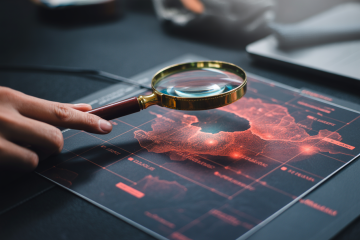For organizations committed to excellence across multiple operational facets, integrating ISO 27001 with other management system standards can streamline processes, reduce duplication of efforts, and enhance overall efficiency. This post explores the synergy between ISO 27001 and other prevalent management standards, offering insights into how organizations can achieve a cohesive approach to management systems integration.
Understanding the Integration Concept
Integration isn’t about merely ensuring that different management systems coexist; it’s about creating a unified system that encompasses the requirements of each standard in a seamless, coherent manner. This approach minimizes conflict, reduces costs, and provides a clearer, unified direction for the organization.
Common Standards for Integration
- ISO 9001 – Quality Management: This standard emphasizes customer satisfaction and the continual improvement of quality management processes. Integrating ISO 9001 with ISO 27001 can ensure that quality and information security processes complement and enhance each other.
- ISO 14001 – Environmental Management: ISO 14001 focuses on effective environmental management systems (EMS). Integrating it with ISO 27001 can help organizations ensure their information security practices also consider and minimize environmental impacts.
- ISO 45001 – Occupational Health and Safety Management: This standard aims to reduce workplace risks and create better, safer working conditions. Integrating it with ISO 27001 can ensure that health and safety practices also protect information security, and vice versa.
Benefits of Integration
- Efficiency: A single, integrated management system (IMS) reduces duplication of efforts, as many processes like internal auditing, management review, and continual improvement can be streamlined.
- Consistency: An IMS helps in aligning objectives and policies across different areas, ensuring that the organization moves cohesively towards its overarching goals.
- Improved Decision-Making: With a holistic view of the organization’s management systems, decision-makers can better understand the interrelations and impacts of their choices across different domains.
Steps for Effective Integration
- Gap Analysis: Conduct a comprehensive review of your existing systems to identify overlaps and gaps between the different standards.
- Unified Policy Development: Develop an integrated policy that encompasses the core objectives of each standard, ensuring that it’s coherent and avoids conflicting requirements.
- Integrated Risk Management: Implement a unified approach to risk management that considers the diverse aspects of quality, environmental impact, health and safety, and information security.
- Consolidated Documentation: Streamline documentation to avoid duplication, ensuring that each document serves multiple standards where possible.
- Holistic Training and Awareness: Train employees on the integrated management system, emphasizing the interconnectedness of quality, environmental, health and safety, and information security practices.
- Unified Auditing and Review: Conduct integrated audits and management reviews that cover the requirements of all the standards your organization adheres to, focusing on areas of synergy and potential improvement.
Conclusion
Integrating ISO 27001 with other management system standards can transform how organizations approach their operational processes, making them more streamlined, efficient, and aligned with their strategic goals. This holistic approach not only enhances compliance and performance across various domains but also fosters a culture of continuous improvement and operational excellence. As businesses increasingly recognize the interconnectivity of their operational, environmental, and security concerns, an integrated management system becomes not just advantageous but essential for sustainable, secure growth.


